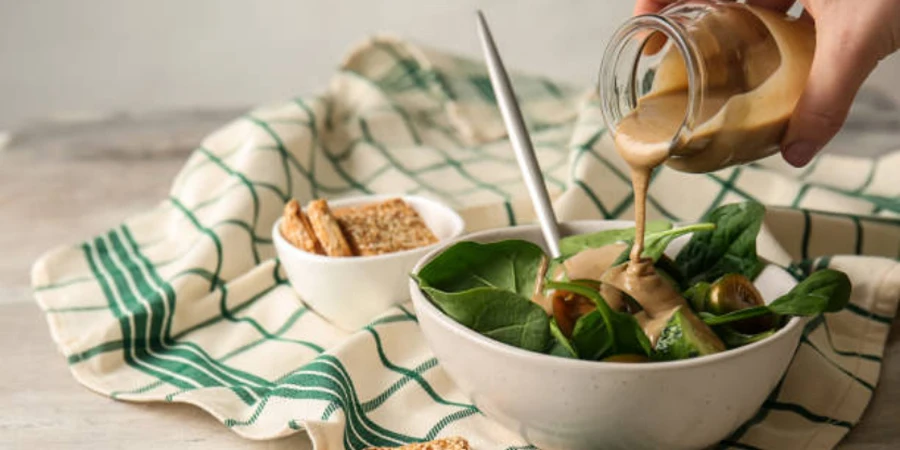In the realm of modern dining, the selection of a salad bowl transcends mere functionality to become a statement of style and elegance. The right choice not only serves the practical purpose of presenting salads in an appealing manner but also contributes significantly to the aesthetic charm of a dining setting. As preferences evolve and the emphasis on both form and utility grows, discerning selection becomes crucial. This consideration is especially pertinent for those tasked with curating dining ware collections, aiming to blend seamlessly with contemporary tastes while ensuring durability and versatility. The impact of a well-chosen salad bowl extends beyond the table, reflecting a nuanced understanding of market trends and consumer desires, thereby enhancing dining experiences in both casual and formal scenarios.
Table of Contents
1. Salad bowl varieties and their applications
2. Insights into the salad bowl market of 2024
3. Key considerations for salad bowl selection
4. Top salad bowls and their distinctive features
5. Conclusion
Salad bowl varieties and their applications
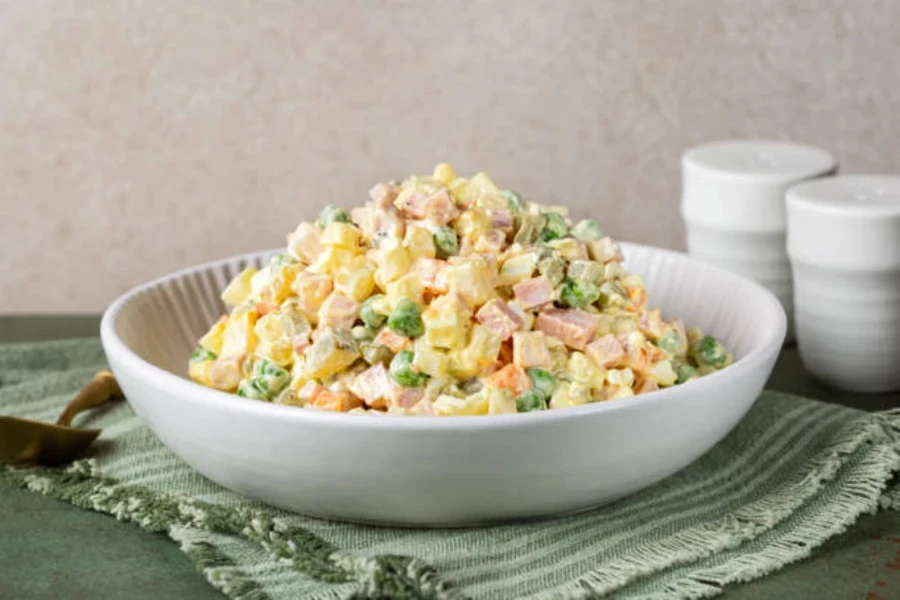
Materials and design
Materials and design are central to the selection of salad bowls, with each material offering unique benefits to cater to various dining settings and preferences. Ceramic bowls are prized for their versatility and aesthetic appeal, available in an array of colors and patterns that can complement any table setting. These bowls are ideal for those seeking a balance between functionality and style, as ceramic is durable enough for daily use yet elegant enough for formal occasions. On the other hand, stainless steel and glass bowls appeal to those looking for durability and a sleek, modern look. Stainless steel is particularly valued for its resistance to stains and odors, making it a practical choice for busy households, while glass offers timeless elegance and the ability to showcase the vibrant colors of fresh salads.
Bamboo and wooden salad bowls introduce a natural, rustic charm to dining experiences, embodying a warm and inviting aesthetic that is perfect for casual meals and gatherings. These materials are not only durable and lightweight but also possess excellent heat retention properties, making them suitable for serving both hot and cold dishes. The unique grain patterns and smooth finish of bamboo and wood add an element of individuality to each bowl, ensuring no two pieces are exactly alike. However, these materials require regular maintenance to prevent drying out and cracking, underscoring the importance of care in preserving their natural beauty.
Plastic and melamine options represent the most practical choices for outdoor and casual dining scenarios. Known for their lightweight and break-resistant properties, these materials offer convenience and ease of use, particularly for families with young children or for those who enjoy dining al fresco. Recent trends have seen a surge in eco-friendly and sustainable materials, such as kraft paper bowls, which cater to the growing demand for products that minimize environmental impact. These innovative designs not only serve the practical purpose of meal presentation but also align with ethical considerations, offering a responsible choice for consumers who prioritize both functionality and sustainability in their dining ware selections.
Usage scenarios

The suitability of different salad bowls extends across a spectrum of dining occasions, necessitating careful consideration of material and design based on the intended use. For daily meals, materials that balance durability with ease of maintenance, such as melamine or stainless steel, are preferred. In contrast, formal events may call for the refined elegance of ceramic or glass bowls, which enhance the presentation of salads through their design and color options. The functionality of the bowl also comes into play, with features like non-slip bottoms and lids for easy storage enhancing the culinary routine, as seen in recent market trends towards bowls that are not only aesthetically pleasing but also practical for a range of dining environments.
Recent insights into salad bowl preferences highlight an increasing demand for eco-friendly materials, such as kraft paper and bamboo, reflecting a growing consumer emphasis on sustainability. These materials cater to the eco-conscious consumer by providing practical, yet environmentally responsible options for salad presentation. The market has also seen a rise in innovative designs, with manufacturers exploring natural elements and vibrant colors to create salad bowls that are visually striking and capable of making a statement on any dining table. The evolution in salad bowl design demonstrates a shift towards products that offer a blend of functionality, style, and sustainability, meeting the diverse needs and preferences of today’s consumers.
Innovative designs in salad bowls have moved beyond mere functionality to become focal points of dining table aesthetics. Manufacturers are increasingly incorporating natural materials, such as bamboo and acacia wood, and experimenting with vibrant colors and patterns in ceramic bowls, allowing for personal expression in dining settings. Additionally, the advent of bowls with built-in compartments signifies a trend towards versatility, enabling consumers to craft visually appealing salad presentations with ease. This shift towards innovative and aesthetically driven designs underscores the importance of selecting a salad bowl that not only meets practical needs but also complements the dining ambiance, aligning with current consumer preferences for products that embody both elegance and practicality.
Insights into the salad bowl market of 2024
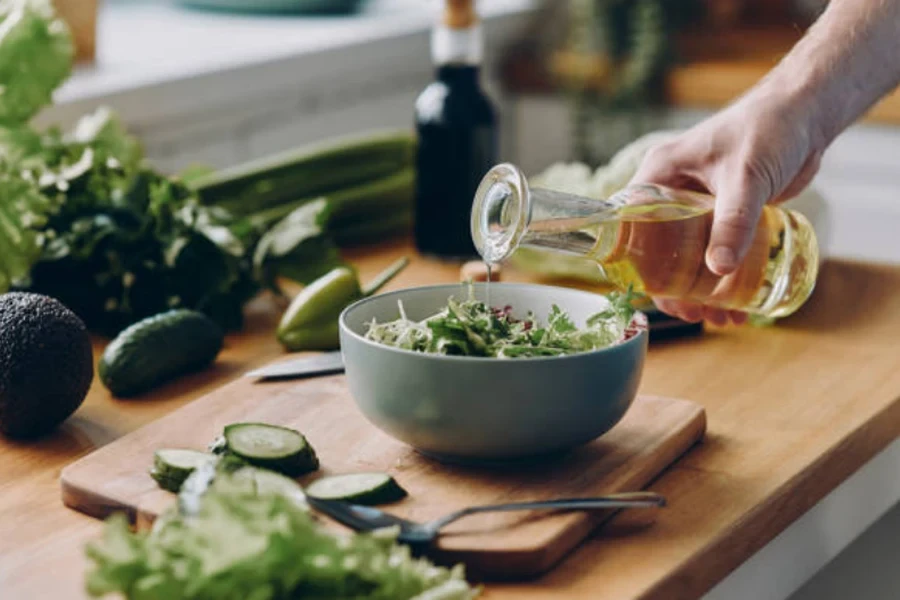
Current trends
The salad bowl market in 2024 is characterized by a dynamic blend of innovation and tradition, reflecting a diverse range of consumer preferences and lifestyle trends. One prevailing trend is the increasing popularity of sustainable and eco-friendly materials. As awareness around environmental issues grows, consumers are gravitating towards salad bowls made from biodegradable, recycled, or renewable resources, such as bamboo, kraft paper, and recycled glass. This shift is not only a nod to environmental responsibility but also speaks to a broader preference for products that combine functionality with ethical values.
Another significant trend is the demand for multifunctional and space-saving designs. With urban living spaces becoming increasingly compact, consumers are seeking salad bowls that offer versatility—such as stackable sets or bowls with integrated serving utensils—and aesthetic appeal to match. This trend towards multifunctionality extends to materials that are both durable and easy to maintain, such as high-quality melamine and scratch-resistant ceramics, which cater to the busy lifestyles of modern consumers.
Market demands

In 2022, the market size of tableware, including salad bowl, was valued at $47.71 billion. Experts forecast an expansion to $79.56 billion by 2030, suggesting a robust compound annual growth rate (CAGR) of 6.60% from 2024 to 2030. Moreover, related insights into the packaged salad market indicate significant growth, with the market valued at USD 12.1 billion in 2021 and expected to reach USD 27.1 billion by 2030. This expansion suggests a compound annual growth rate (CAGR) of 8.4% from 2022 to 2030. This data, while focused on packaged salads rather than salad bowls specifically, underscores the broader trend towards healthy eating and convenience in food consumption, which could parallel trends and opportunities within the salad bowl market segment.
There’s a growing consumer demand for products that not only meet the practical requirements of durability and ease of use but also align with personal values and aesthetic preferences. Design trends also play a crucial role in shaping market demands. Consumers are looking for salad bowls that serve as statement pieces in their dining setup—items that boast unique designs, vibrant colors, or artisanal craftsmanship. This desire for aesthetically pleasing tableware is driving manufacturers to innovate, blending traditional techniques with contemporary designs to create bowls that are both beautiful and functional.
The salad bowl market of 2024 reflects a complex interplay of consumer preferences, with a clear lean towards sustainability, multifunctionality, and design excellence. As the market continues to evolve, it’s evident that the future of salad bowls lies in the ability of manufacturers to adapt to these trends, offering products that not only serve their primary function but also enhance the dining experience through innovation, sustainability, and style.
Key considerations for salad bowl selection
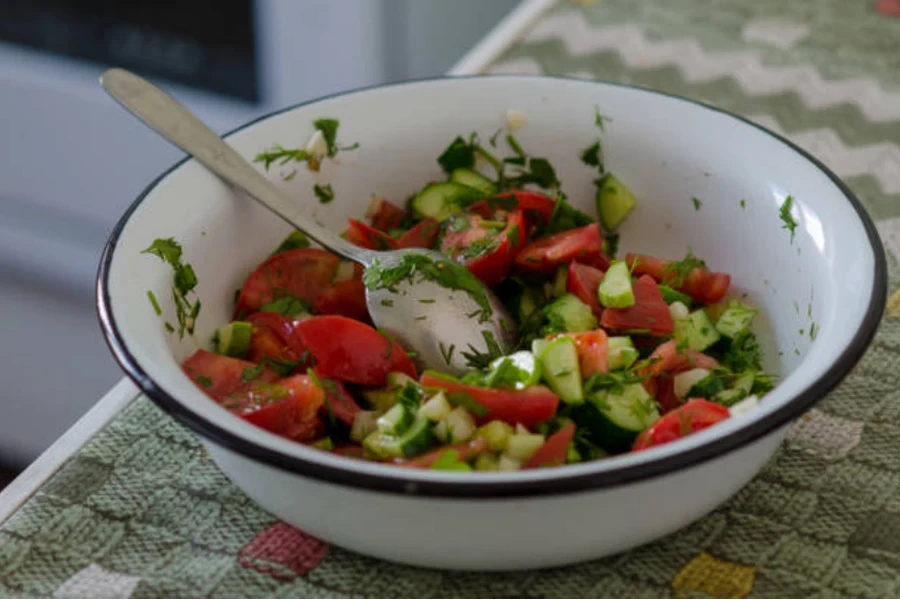
Quality and durability
When selecting salad bowls, the intersection of quality and durability is paramount, significantly influencing both the lifespan and the day-to-day enjoyment of the product. Materials play a critical role in this aspect, with ceramic, stainless steel, and bamboo each offering distinct advantages:
Ceramic: High-quality ceramic bowls are known for their exceptional durability when properly glazed and fired at high temperatures. This process enhances their resistance to chipping, cracking, and staining, ensuring they can withstand regular use. For instance, porcelain, a type of high-fired ceramic, is particularly revered for its longevity and can often survive decades of use without losing its luster. A well-crafted porcelain salad bowl can be an investment in dining elegance, retaining its beauty through countless meals.
Stainless Steel: Esteemed for its robustness, stainless steel is virtually indestructible under normal kitchen conditions. It doesn’t rust, corrode, or tarnish over time, making it an ideal choice for those looking for longevity without the need for extensive upkeep. Stainless steel bowls often feature a brushed or polished finish that hides fingerprints and minor scratches, ensuring they maintain their sleek appearance. Their resilience makes them suitable for environments where they might be subject to more rigorous handling, such as outdoor barbecues or family gatherings with young children.
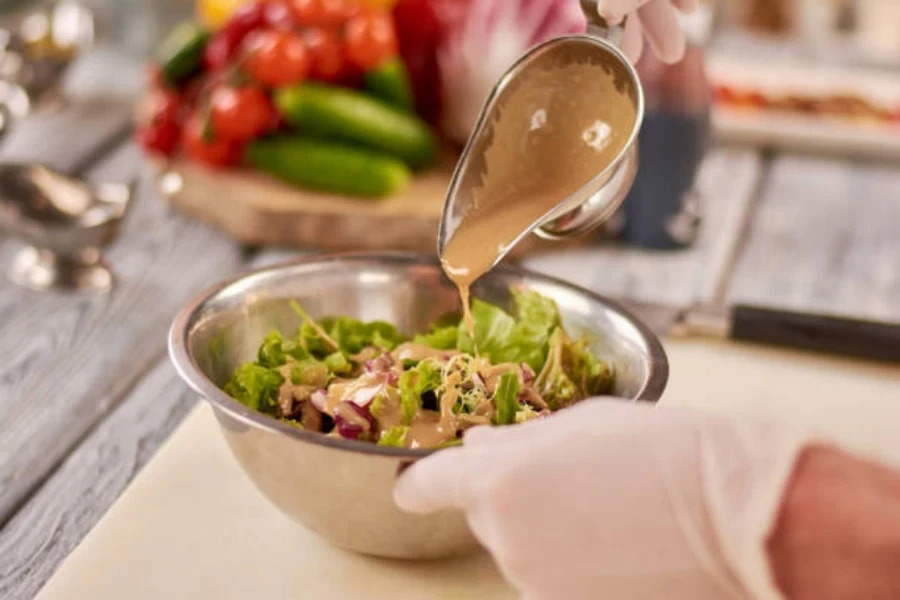
Bamboo: As a material, bamboo stands out for its sustainability and durability. It is harder and more durable than most hardwoods, yet it is surprisingly lightweight, making bamboo salad bowls both sturdy and easy to handle. Unlike other wooden bowls, bamboo has a natural resistance to moisture and bacteria, reducing the risk of warping or molding with proper care. These bowls often come finished with food-safe oils that enhance their natural grain, contributing to their aesthetic appeal while protecting the material over time.
In assessing the construction quality of salad bowls, it is essential to examine the bowl’s thickness, the smoothness of its finish, and the integrity of its form. High-quality construction is characterized by uniform thickness that prevents weak spots, a smooth glaze that minimizes porosity in ceramic bowls, and seamless construction in stainless steel and bamboo options that eliminates crevices where bacteria could harbor.
Moreover, the method of joining parts in composite bowls, such as those with a separate base or handles, should be scrutinized for sturdiness. High-caliber joining techniques ensure that parts remain affixed securely, even with frequent use and cleaning. For example, a stainless steel bowl with a securely welded base will be more stable and less likely to separate over time compared to one that is merely glued.
By prioritizing these features of quality and durability, individuals can select salad bowls that not only serve their immediate needs but also stand as lasting components of their culinary collection, embodying both practicality and enduring beauty.
Aesthetic considerations
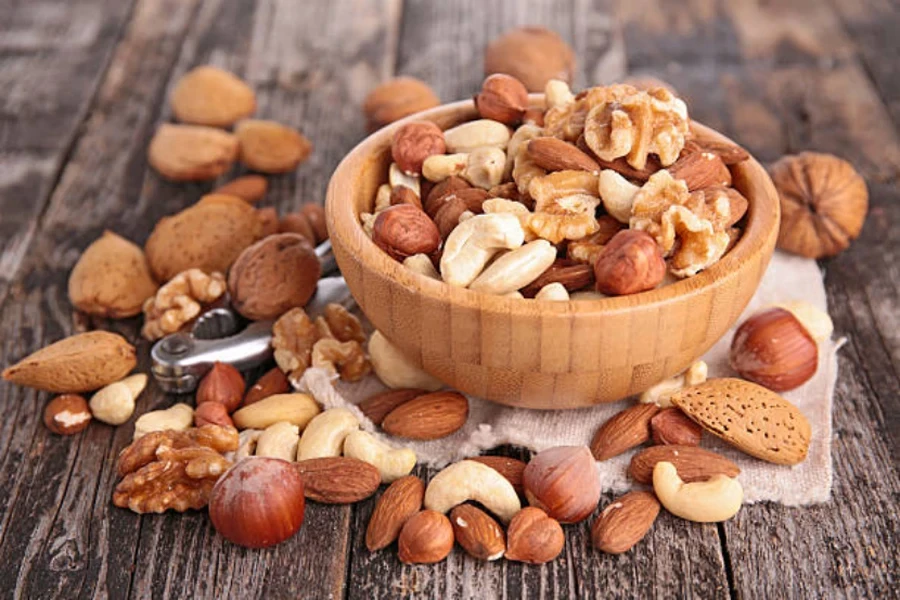
The aesthetic appeal of salad bowls significantly influences the overall dining experience, making the alignment of bowl styles with existing dinnerware and kitchen decor a critical factor in selection. This harmony in design not only enhances the visual appeal of the meal but also reflects the personal style and sophistication of the host.
Complementary Styles: Choosing a salad bowl that complements the existing dinnerware set can create a cohesive look that ties the dining experience together. For instance, a minimalist white porcelain dinner set can be beautifully complemented by a salad bowl with subtle geometric patterns or a slight color accent, adding depth while maintaining a unified theme. Conversely, for a more eclectic table setting, mixing and matching bold colors and patterns can inject personality and vibrancy into the dining atmosphere.
Material and Texture: The material of the salad bowl adds another layer of aesthetic consideration. A glossy ceramic bowl can add a touch of elegance to a formal dining setting, while a rough-textured, stone-like bowl might better suit a rustic or earthy table arrangement. The interplay of textures and finishes across different components of the table setting can significantly impact the overall sensory experience of dining.
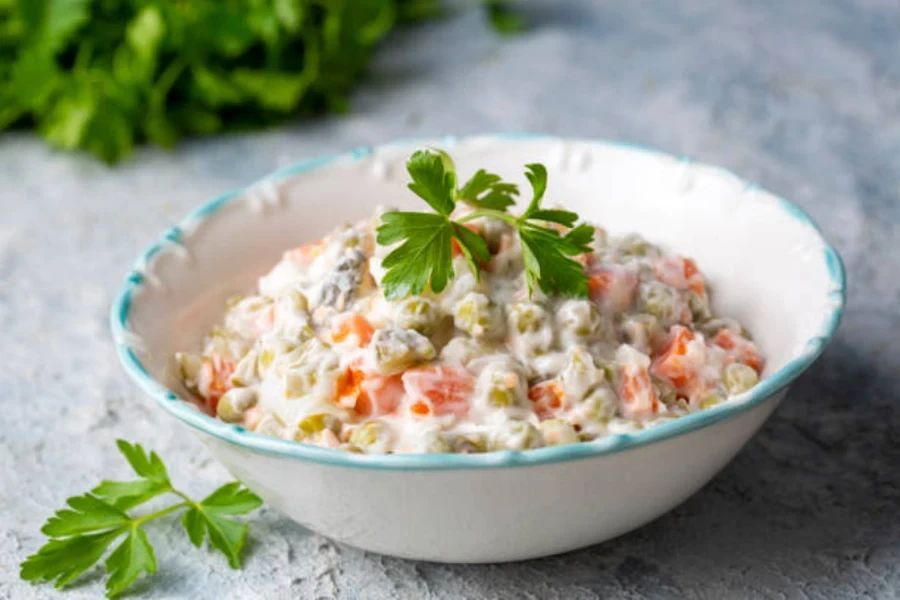
Color Coordination: Color plays a pivotal role in creating visual harmony. Selecting a salad bowl in a hue that either complements or thoughtfully contrasts with the color palette of the existing dinnerware can elevate the aesthetic appeal of the table. For example, a deep blue salad bowl can serve as a stunning centerpiece on a table set with neutral-toned plates, providing a pop of color that draws the eye without clashing with the overall scheme.
Design Motifs and Themes: For those with themed kitchen decor or dinnerware collections, selecting salad bowls that echo or subtly reference these motifs can further enhance the thematic cohesion of the space. A nautical-themed kitchen, for instance, could be complemented by salad bowls featuring blue stripes or sea life designs, reinforcing the maritime aesthetic in a tasteful and understated manner.
Incorporating these aesthetic considerations requires a careful balance between personal taste, the functionality of the salad bowl, and the overall design vision for the dining space. The goal is to select a bowl that not only serves its purpose but also contributes to the beauty and harmony of the meal presentation. By prioritizing these elements, individuals can create dining experiences that delight the senses and reflect their unique style.
Size and capacity considerations
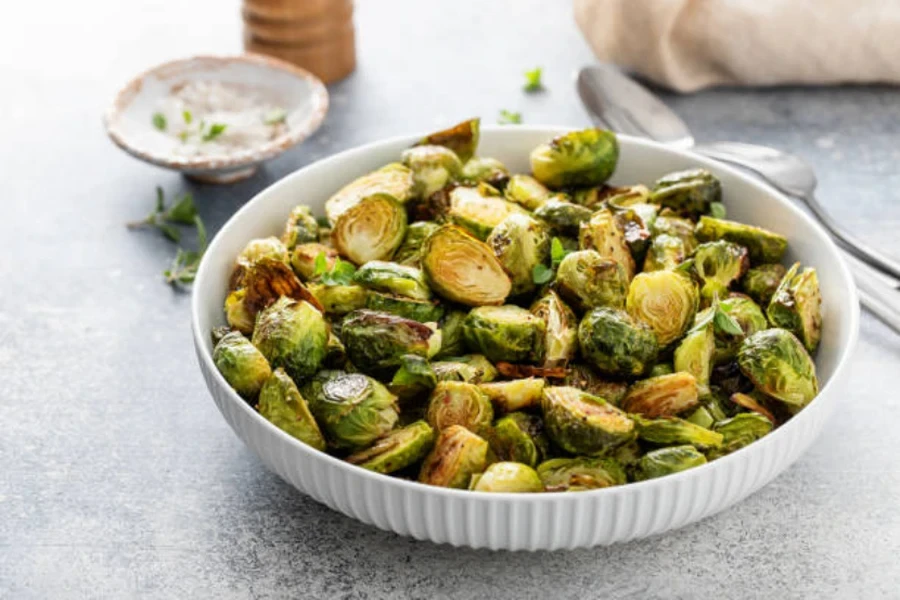
Choosing the right size and capacity for salad bowls is crucial to accommodate various dining needs, from individual servings to larger gatherings. The dimensions of a salad bowl not only affect its utility but also the presentation of the salad itself.
Single Servings: For individual servings, bowls ranging from 6 to 8 inches in diameter are typically sufficient. These sizes are perfect for personal salads, allowing ample space for a mix of greens, vegetables, proteins, and dressing without overcrowding. A bowl of this size ensures that each component of the salad is accessible, enhancing the dining experience for the individual. For instance, a 7-inch ceramic bowl with a medium depth is ideal for lunch servings, allowing easy mixing of ingredients without spilling.
Family-Style Meals: When serving salads as part of family-style meals, larger bowls are necessary to accommodate the greater quantity of food. Bowls that are 10 to 12 inches in diameter with a deeper basin can hold enough salad for a family of four to six. This size allows for generous portions of greens and toppings, as well as efficient tossing with dressing. A 12-inch bamboo bowl, known for its lightweight and durability, can be an excellent choice for these occasions, offering both practicality and a visually appealing presentation on the dining table.
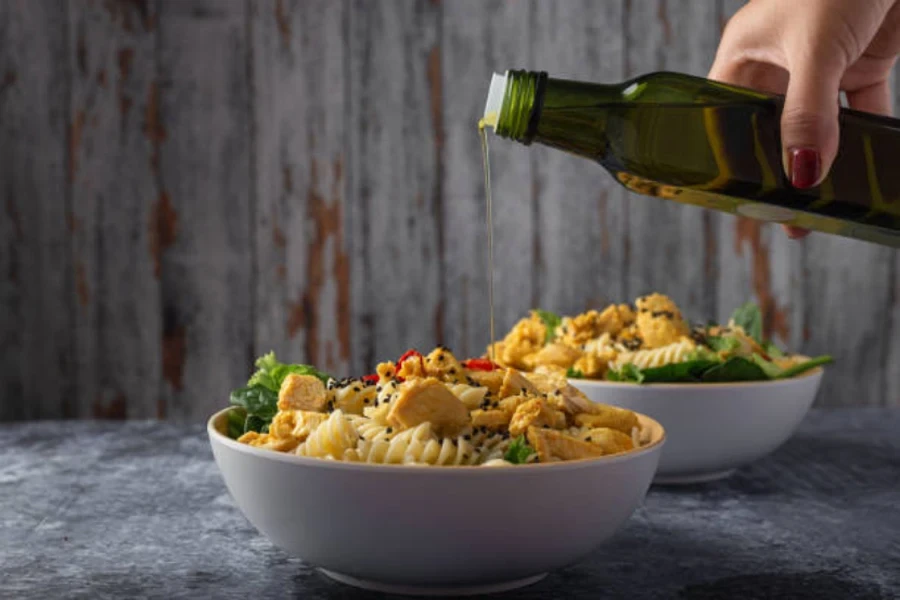
Entertaining and Gatherings: For entertaining guests or larger gatherings, salad bowls exceeding 12 inches in diameter are recommended. These grander bowls can serve eight or more people, making them indispensable for parties, celebrations, or potluck dinners. A 14-inch stainless steel bowl with a wide opening, for example, not only facilitates easy access for serving but also stands out as a centerpiece, contributing to the event’s aesthetic appeal. Its material ensures longevity and ease of maintenance amidst frequent use.
Practical Examples: Considering the diverse needs, a versatile collection might include a mix of sizes. For everyday personal use, a set of 7-inch bowls can be complemented with a larger 12-inch bowl for family dinners and an even larger 14-inch or more for special occasions. This approach ensures preparedness for any dining scenario, from a quiet dinner at home to a festive gathering.
Selecting salad bowls with the right size and capacity is essential for both functionality and presentation. By carefully considering these aspects, one can ensure that their salad bowls meet their dining needs while also fitting seamlessly into their lifestyle and dining practices.
Practicality for everyday use
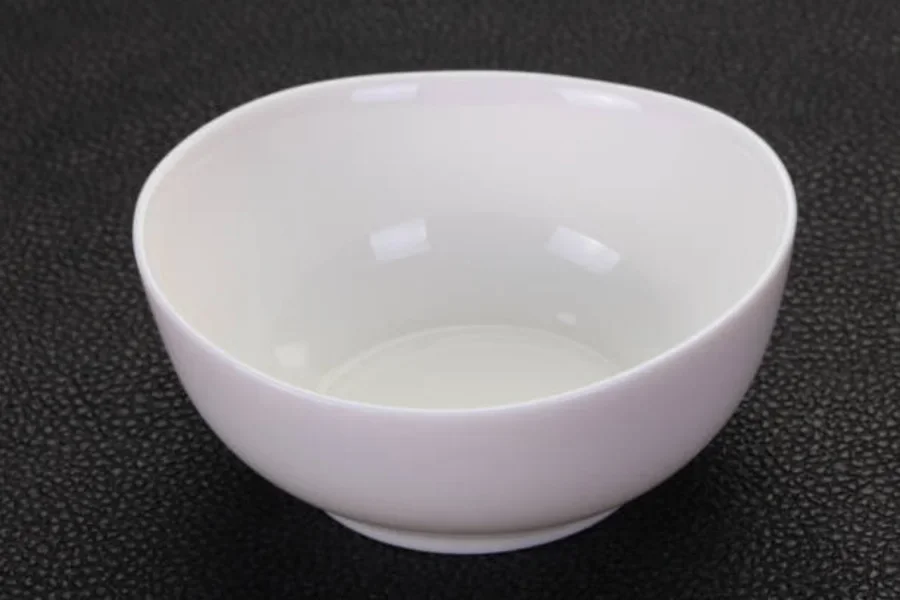
The practicality of salad bowls for everyday use hinges on several factors: ease of cleaning, storage efficiency, and versatility. Each of these aspects contributes to the overall functionality of the bowl in daily life, impacting the user experience significantly.
Ease of Cleaning: Salad bowls that are easy to clean promote hygiene and convenience, especially for those with busy lifestyles. Materials like high-grade stainless steel and glazed ceramics are not only durable but also resist staining and odors, making them simple to wash by hand or in a dishwasher. For instance, a glazed ceramic bowl with a smooth finish can be easily rinsed and wiped down, or placed in the dishwasher, without the risk of absorbing flavors or colors from salads. Stainless steel bowls offer the added advantage of being virtually maintenance-free, requiring only a quick wash to remove oily residues.
Storage Efficiency: In kitchens where space is at a premium, the ability to efficiently store salad bowls is essential. Stackable designs or bowls that nest within each other maximize cabinet or pantry space, making storage a breeze. A set of melamine salad bowls, known for their lightweight and break-resistant properties, can often be nested together, occupying minimal space while remaining accessible. This feature is particularly valuable for those who entertain frequently or have varied size requirements for different occasions.
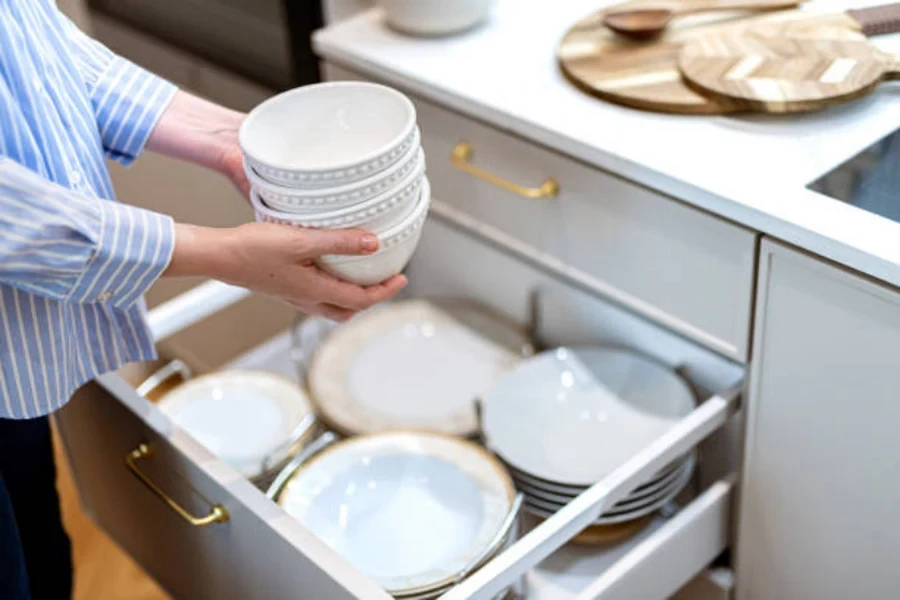
Versatility in Use: The most practical salad bowls are those that can be used for multiple purposes beyond serving salads. A deep, wide-rimmed glass bowl, for example, can double as a mixing bowl for baking ingredients or a vessel for fruit displays, enhancing its utility in the kitchen. Bamboo bowls, celebrated for their durability and eco-friendliness, can be used for both indoor dining and outdoor gatherings, serving not just salads but also as containers for bread, chips, or other snacks. The ability to use the same bowl for different functions not only saves space but also simplifies meal preparation and serving.
Practical Examples: Considering these factors, a versatile salad bowl collection might include a large, easy-to-clean stainless steel bowl for family dinners and outdoor use, a set of stackable melamine bowls for space-saving storage and casual meals, and a beautifully glazed ceramic bowl that serves as both a functional piece for salads and an elegant option for presenting fruits or desserts.
By prioritizing practicality in the selection of salad bowls, individuals can ensure that their choices not only enhance the dining experience but also offer convenience, efficiency, and versatility in everyday use. This practical approach to selecting kitchenware supports a seamless integration into daily routines, promoting both functionality and enjoyment in meal preparation and presentation.
Top salad bowls and their distinctive features
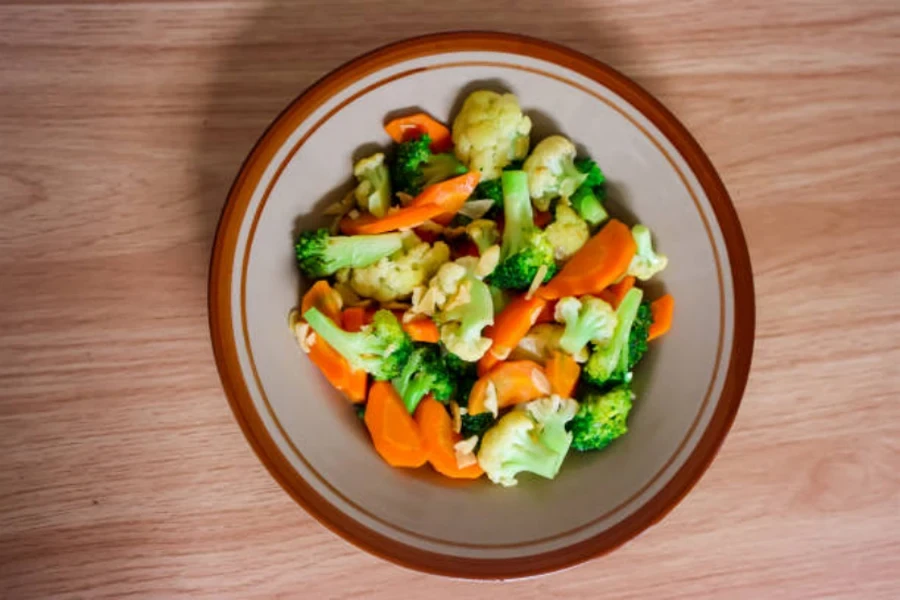
The leading models and brands in the salad bowl market have set themselves apart by addressing the needs and preferences of modern consumers. Through a combination of eco-friendly practices, unique designs, and innovative features, these selections offer practical solutions that do not compromise on style or sustainability.
Top picks for 2024
Williams Sonoma Pantry Serving Bowl
Price: $49.99
Material: High-quality porcelain
Dimensions: Approximately 4.5″ high x 13″ diameter (though sizes may vary)
Features: This elegant white serving bowl is a versatile kitchen staple from Williams Sonoma, known for its durability and timeless design. It’s ideal for a wide array of uses, from showcasing vibrant salads to serving heaping portions of pasta or fruit. The bowl’s neutral aesthetic allows it to blend seamlessly with any table setting, whether casual lunches or formal dinner parties. Its porcelain construction ensures it is microwave, oven, and freezer safe, making it perfect for both preparation and serving. The bowl is also dishwasher safe, offering convenience for clean-up after meals. It’s praised for its substantial capacity, ensuring you can serve generous portions without overcrowding the bowl.
Usage: Perfect for those who appreciate minimalist design with functional elegance. It makes a beautiful addition to any kitchen or dining room, suitable for daily use or special occasions.

Williams Sonoma Open Kitchen Wood Salad Bowl
Price: $69.95
Material: Solid Acacia wood
Dimensions: Available in three sizes, with the largest being 17” in diameter x 6” high
Features: This wooden salad bowl brings a warm, natural element to your table with its rich Acacia wood construction. Each bowl is unique, showcasing the natural grain and variations of the wood, sealed with a food-safe lacquer for durability and long-lasting beauty. The bowl’s design features a tapered shape that not only makes it visually appealing but also practical for tossing and serving salads with ease. Despite its sturdy build, it’s surprisingly lightweight, facilitating easy handling during meal prep and serving. The wooden aesthetic makes it a perfect centerpiece for rustic-themed dinners or as a stylish contrast in more modern settings.
Usage: Ideal for those who love to incorporate natural materials into their dining experience. It’s a statement piece that suits both intimate family dinners and larger gatherings, requiring hand washing to maintain its beauty over time.
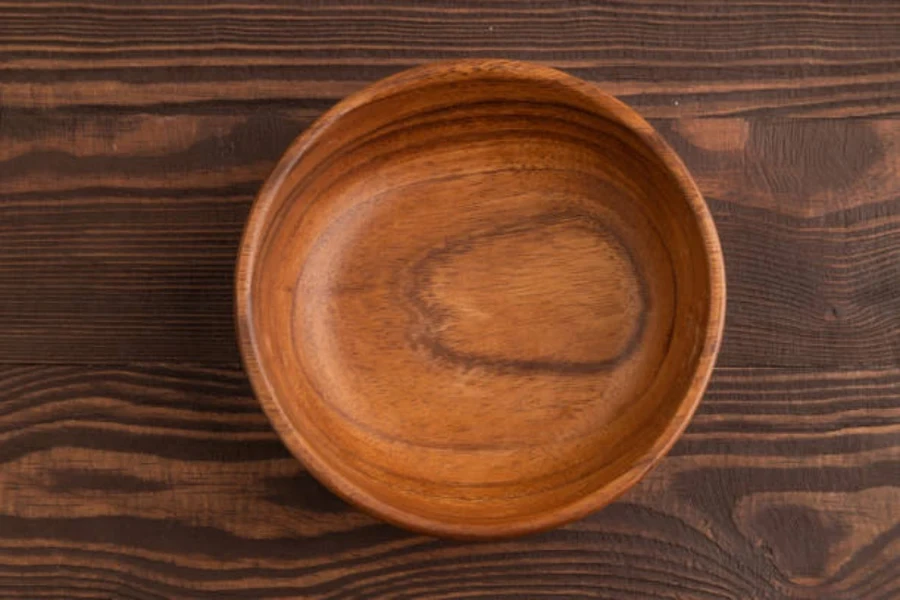
Anthropologie Shiny Latte Pasta Bowls
Price: $56 (for a set of 4)
Material: Glazed earthenware
Dimensions: Each bowl is 2.25″ high x 7.75″ diameter
Features: Designed with versatility in mind, these bowls from Anthropologie are not just for pasta. Their shallow depth and wide diameter make them equally suitable for serving salads, accentuating the colors and textures of the ingredients. The set includes four bowls, each available in stylish, muted colors like cream, lavender, pink, terra cotta, and maize, adding a subtle pop of color to your table. The glazed earthenware material provides a smooth, durable finish that’s both dishwasher and microwave safe. The bowls are stackable, saving valuable cabinet space while keeping your kitchen organized.
Usage: A great choice for those who appreciate both functionality and style in their serveware. These bowls are perfect for casual dining, brunches, or even formal gatherings, offering a chic way to present salads, sides, or main courses.

Bentgo Salad Stackable Lunch Container
Price: $16.99
Material: BPA-free plastic
Dimensions: 7″ diameter x 4.15″ high
Features: The Bentgo Salad Stackable Lunch Container revolutionizes the way salads are carried on the go. Its innovative design includes separate compartments for various salad components, ensuring that greens stay crisp, toppings remain fresh, and dressings are kept aside until it’s time to eat. The main bowl fits up to 4 cups of vegetables, making it spacious enough for a hearty salad. The top compartment is ideal for holding toppings and mix-ins, preventing them from getting soggy. Additionally, there’s a built-in compartment for dressing and a reusable fork that fits into the container’s lid, making it a complete, all-in-one solution for salad enthusiasts. The container is freezer and dishwasher safe, designed for convenience and reusability, available in three stylish colors.
Usage: This bowl is perfect for professionals, students, or anyone who prefers to pack a healthy, homemade salad for lunch. Its leakproof design ensures that it can be carried in a bag without worries, making it ideal for travel, work, or school lunches.

Crate & Barrel Lunea Melamine Outdoor Serving Bowl
Price: $49.95
Material: Melamine
Dimensions: 11.75″ diameter x 3.5″ high
Features: Designed for outdoor dining and gatherings, the Crate & Barrel Lunea Melamine Outdoor Serving Bowl combines durability with elegance. The bowl is crafted from BPA-free melamine, offering the aesthetic appeal of ceramic without the fragility. Its glossy white finish and generous size can accommodate up to 80 ounces of salad, pasta, or fruit, making it perfect for serving a crowd. While the bowl mimics the look of higher-end serveware, its melamine construction means it’s resistant to breakage, scratches, and fading, ensuring it lasts through many seasons of outdoor entertainment. Though it’s not suitable for microwave use, it’s dishwasher safe, simplifying cleanup.
Usage: Ideal for picnics, barbecues, pool parties, or any outdoor event where you need sturdy yet stylish serveware. This bowl’s practicality doesn’t sacrifice its design, making it a great centerpiece for any table setting, from casual to elegant outdoor dining experiences.
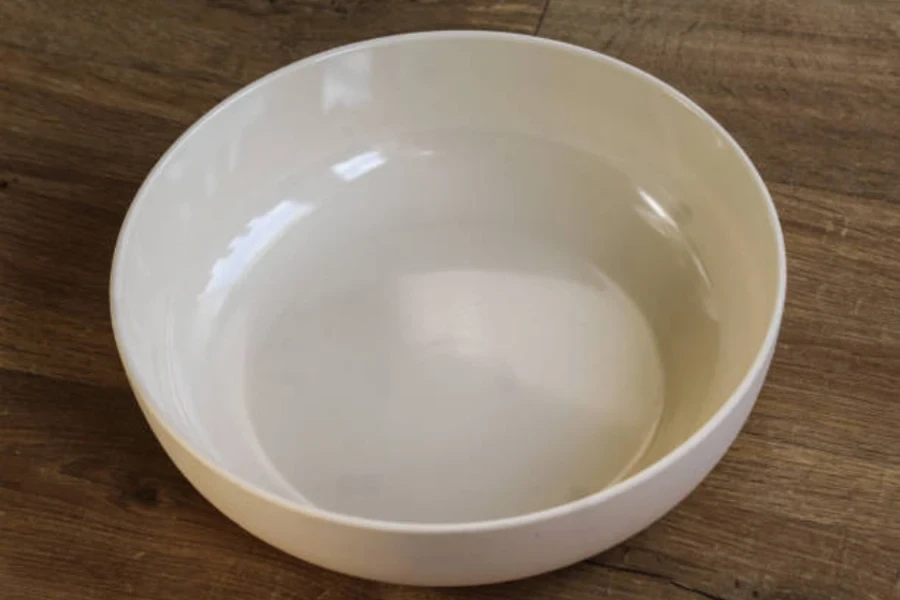
These salad bowls offer modern solutions to traditional dining needs, catering to both on-the-go individuals and outdoor entertainers. Their thoughtful designs emphasize convenience, style, and the practical aspects of enjoying salads anywhere, anytime.
Innovative options
Christian Lacroix Porcelain Serving Bowl
Design: This bowl showcases the distinctive style of Christian Lacroix, featuring watercolor stripes and patterns that are hand-painted with platinum and 24k-gold detailing. It represents a luxurious and out-of-the-ordinary option for those looking to add a piece of art to their table.
Usage: Perfect for formal events or as a statement piece in a dinner setting, this bowl combines the elegance of fine dining with the whimsical charm of Christian Lacroix’s design philosophy.

Functional, Stylish Serving Set
Material: Made of sustainable and durable bamboo, this set includes eight stackable bowls that are both freezer- and dishwasher-safe. The largest bowl comes with a matching lid that doubles as a cutting board and serving tray, designed with a notch to accommodate the serving fork and spoon handles.
Usage: Ideal for casual meals with friends or family, this set provides everything needed for a convenient dining experience. Its eco-friendly material and practical design make it suitable for everyday use, enhancing the functionality of meal prep and serving.
Sculptural Ceramic Bowls
Design: Inspired by the work of Danish modern artist Vilhelm Lundstrom, these bowls are handmade in Portugal using a slip-cast technique. The design is both functional and refined, with vibrant colors that add a playful touch to the dining table or sideboard.
Usage: These bowls appeal to fans of modern art and those who appreciate handcrafted items. They are perfect for those looking to incorporate unique and eye-catching pieces into their serveware collection, suitable for both serving and as decorative objects in the home.
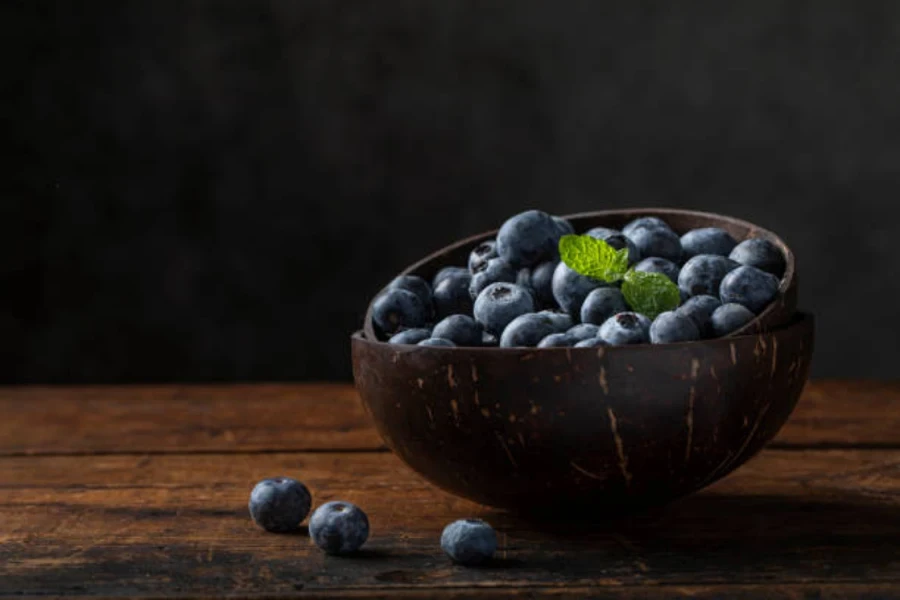
Each of these bowls offers a unique blend of aesthetic appeal, functionality, and craftsmanship, catering to a wide range of tastes and dining occasions. Whether you’re drawn to the luxurious detailing of Christian Lacroix, the sustainable practicality of a bamboo set, or the artistic flair of sculptural ceramic bowls, there’s a salad bowl option to enhance your dining experience and table setting.
Conclusion
Throughout this exploration, we’ve delved into the multifaceted considerations that define the selection of salad bowls, emphasizing quality, aesthetics, size, practicality, and innovation as pivotal factors. For business professionals and online retailers, understanding these aspects is crucial to curating selections that resonate with contemporary consumers. As we look toward 2024, the integration of sustainable practices, unique design elements, and versatile functionalities stands to significantly enhance the dining experience, meeting and exceeding the evolving needs and preferences of the market. This guide aims to serve as a valuable resource, assisting in the informed selection of salad bowls that align with both current trends and timeless elegance.
